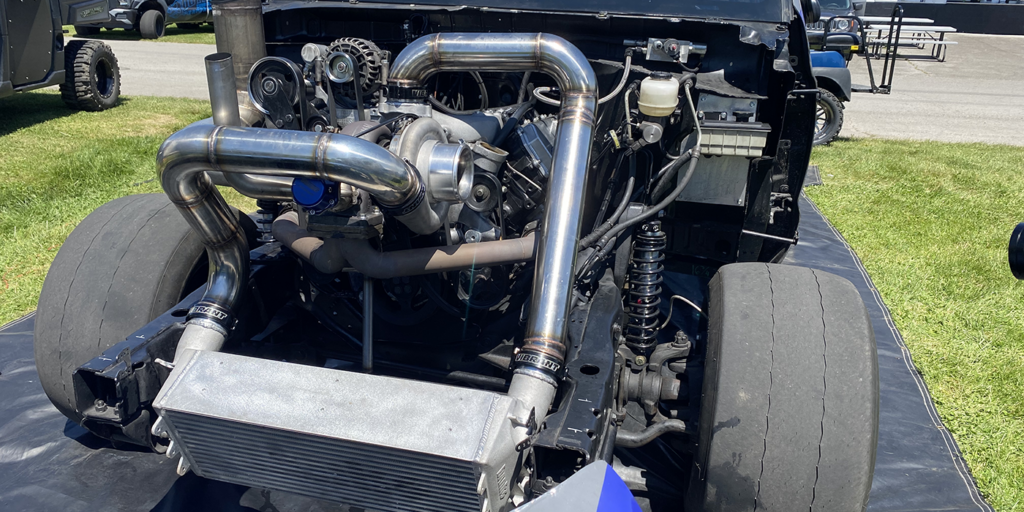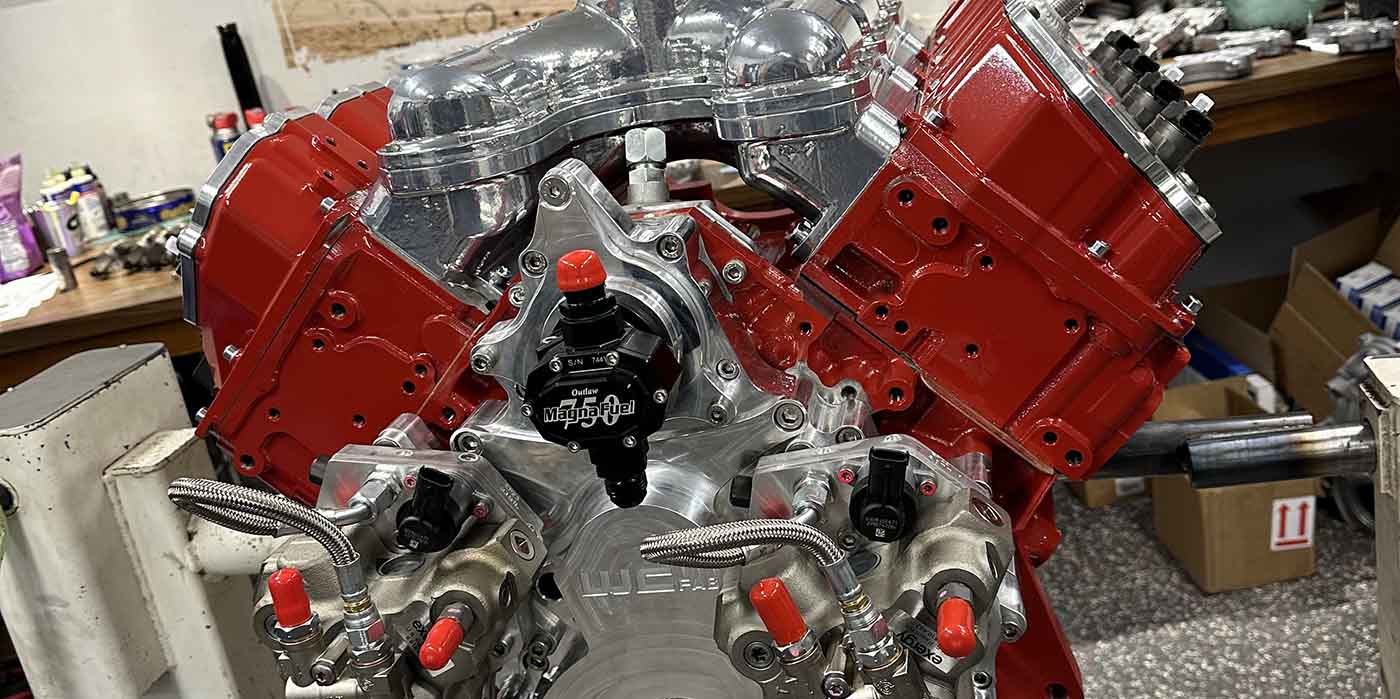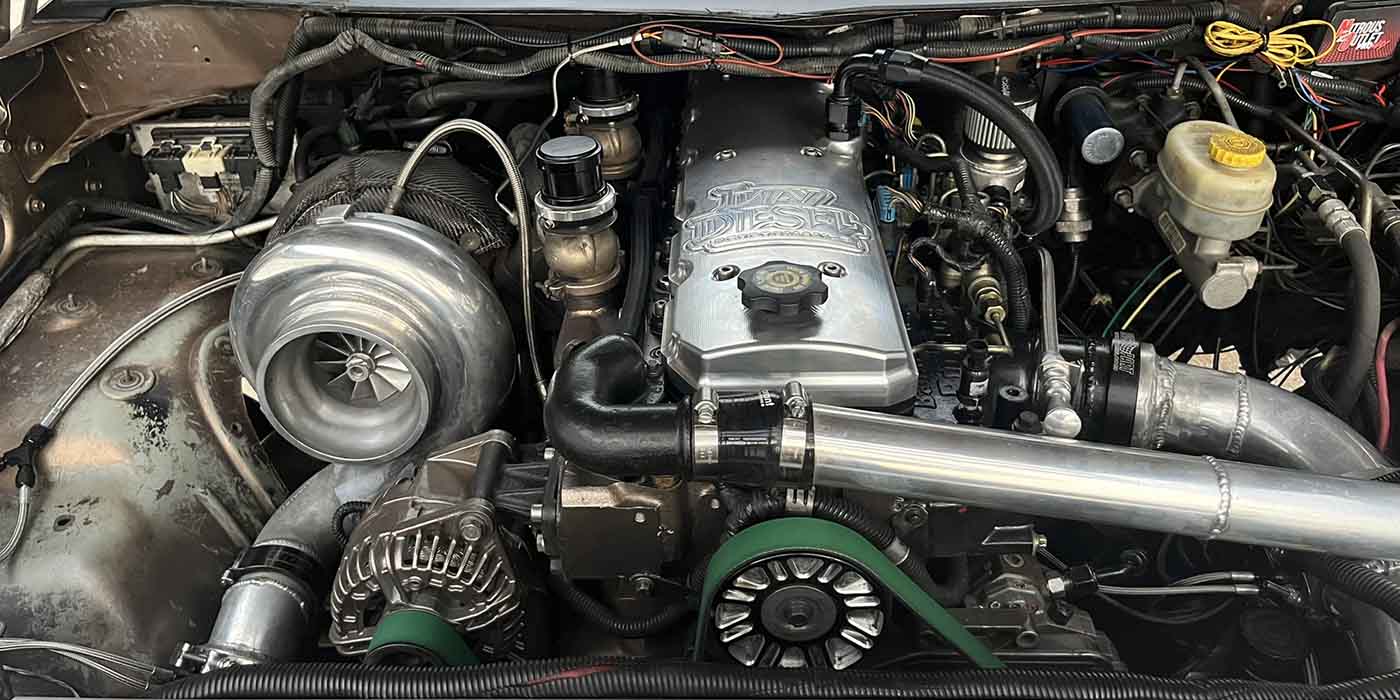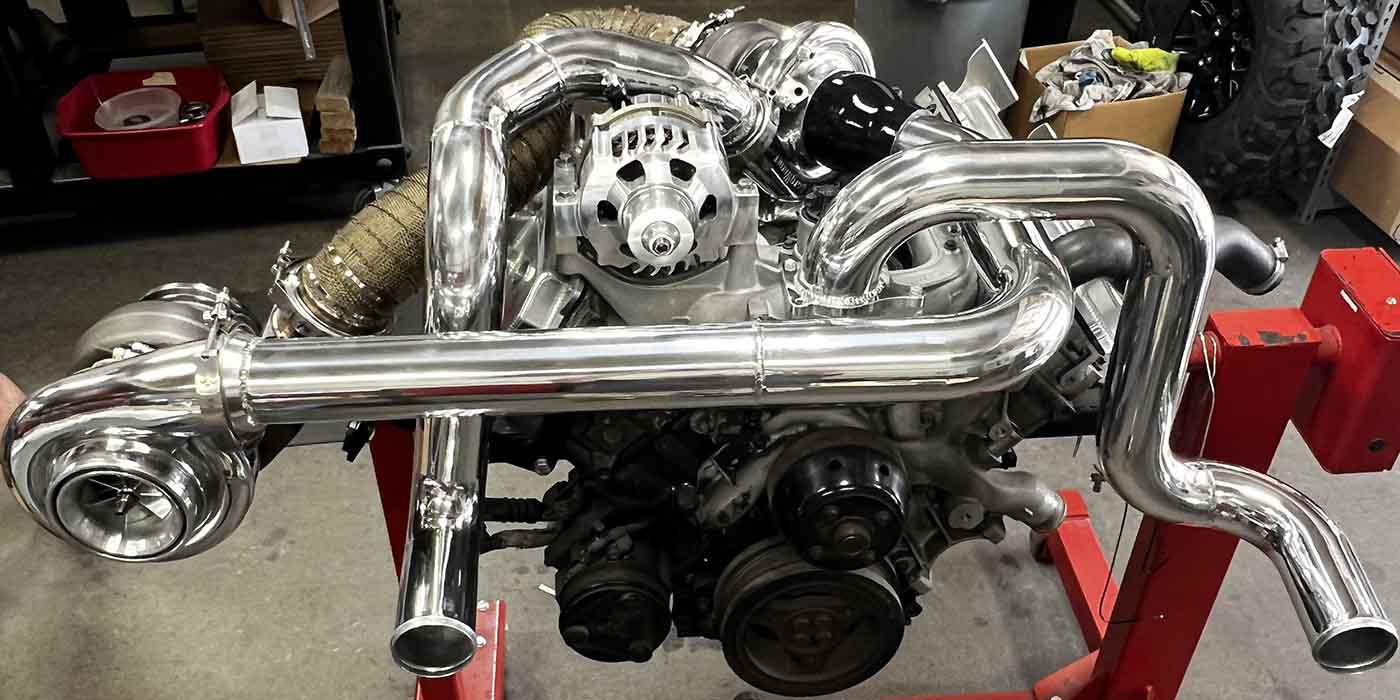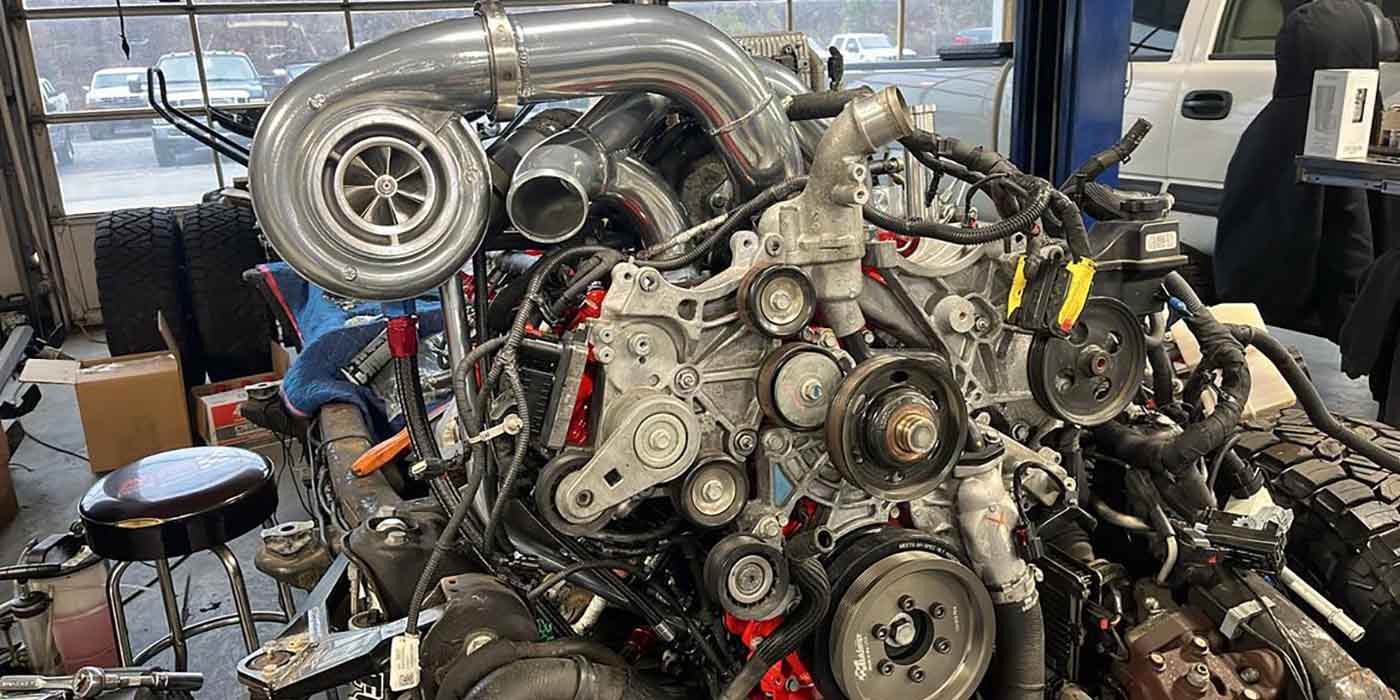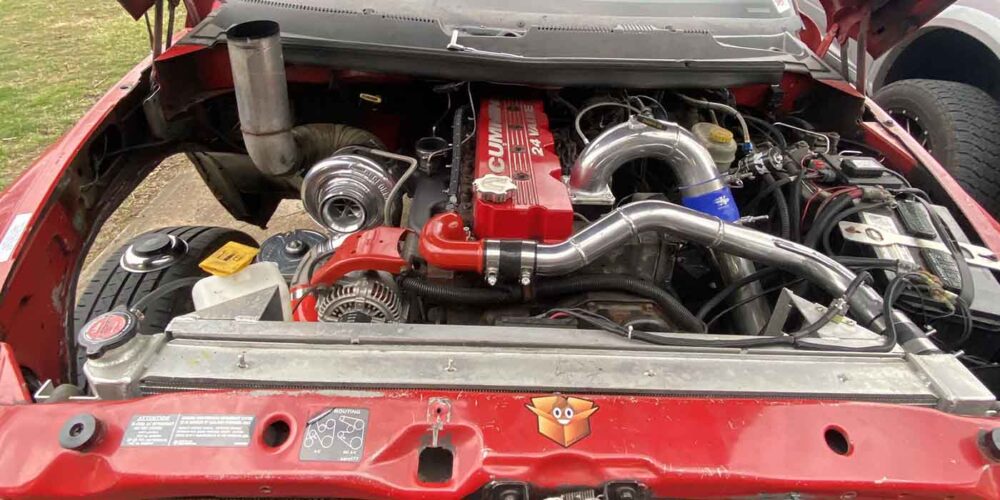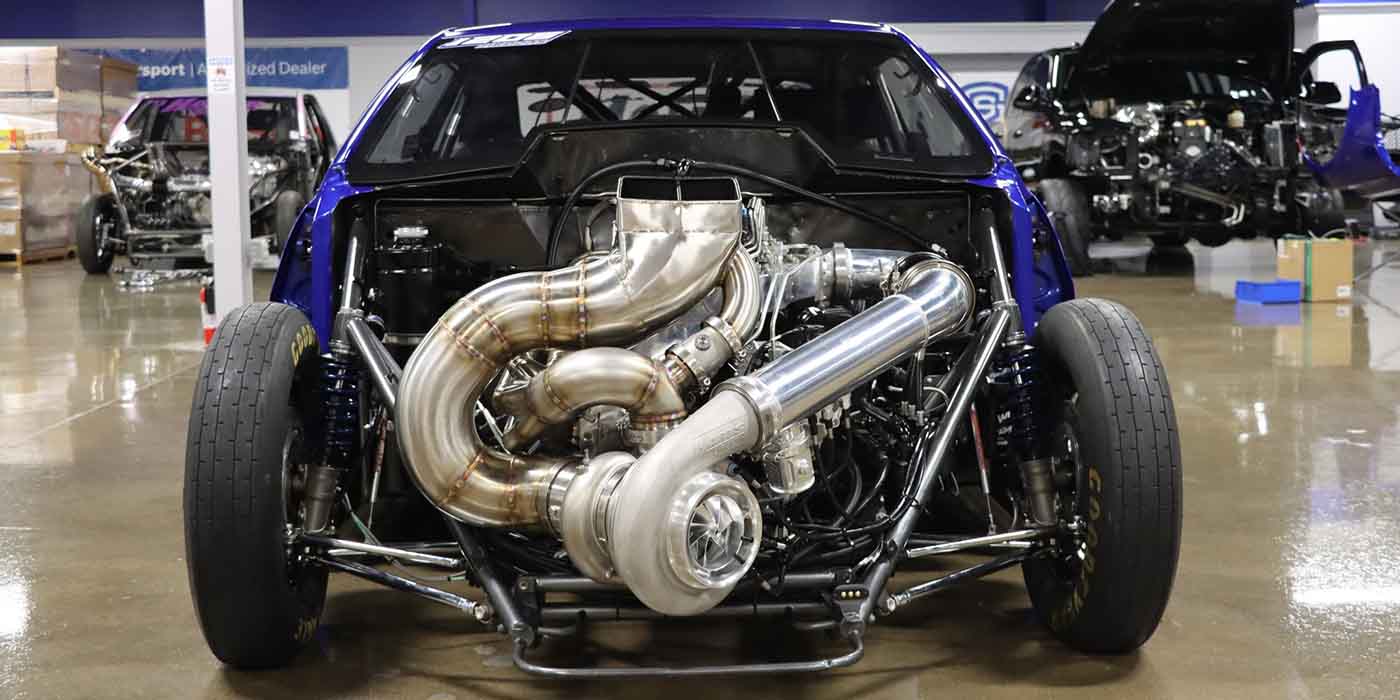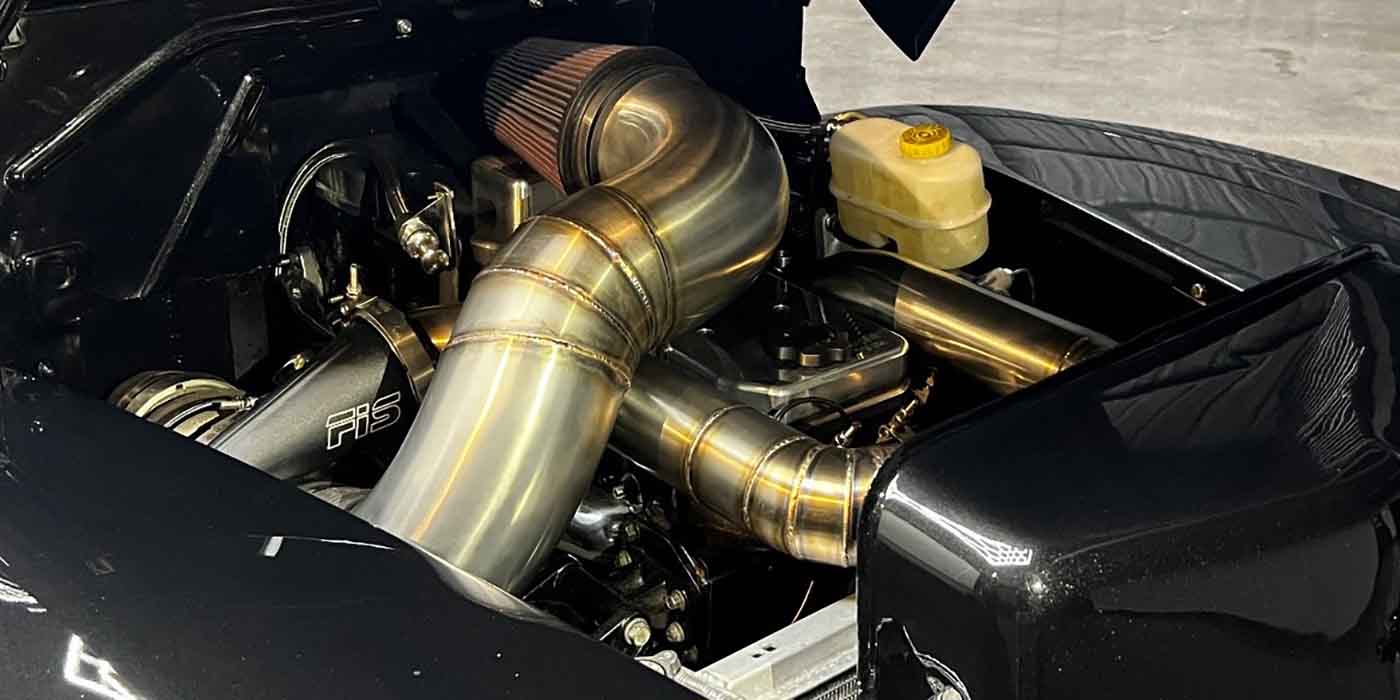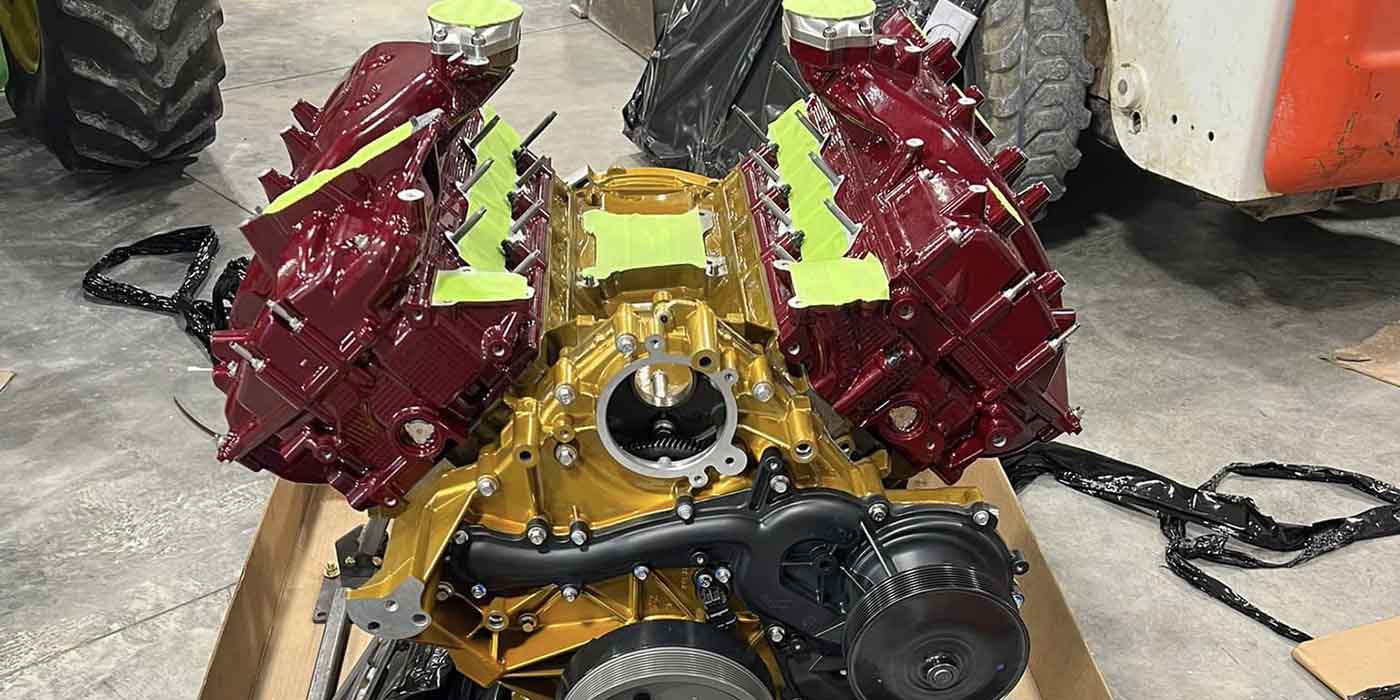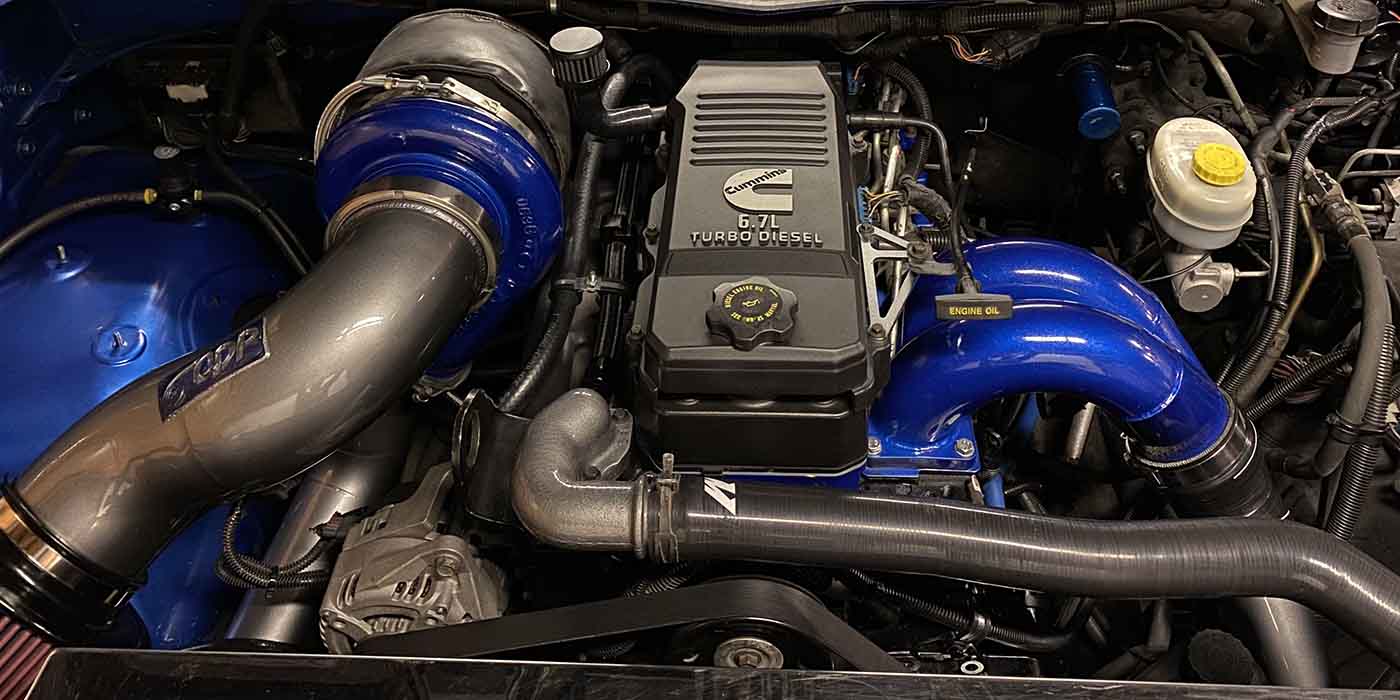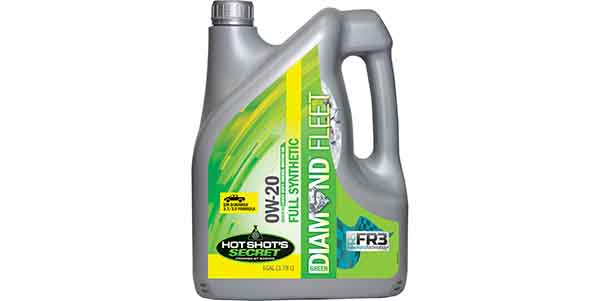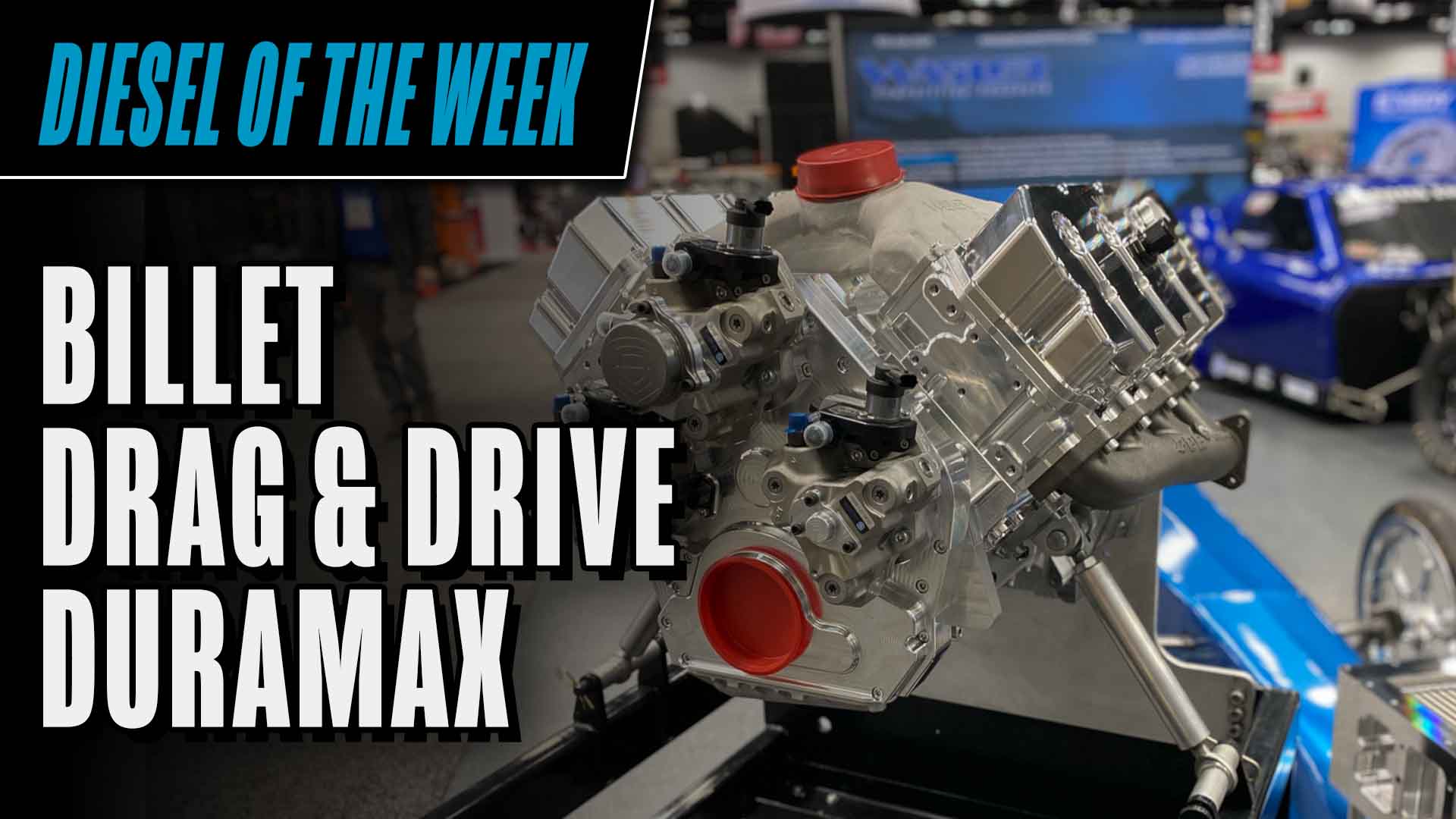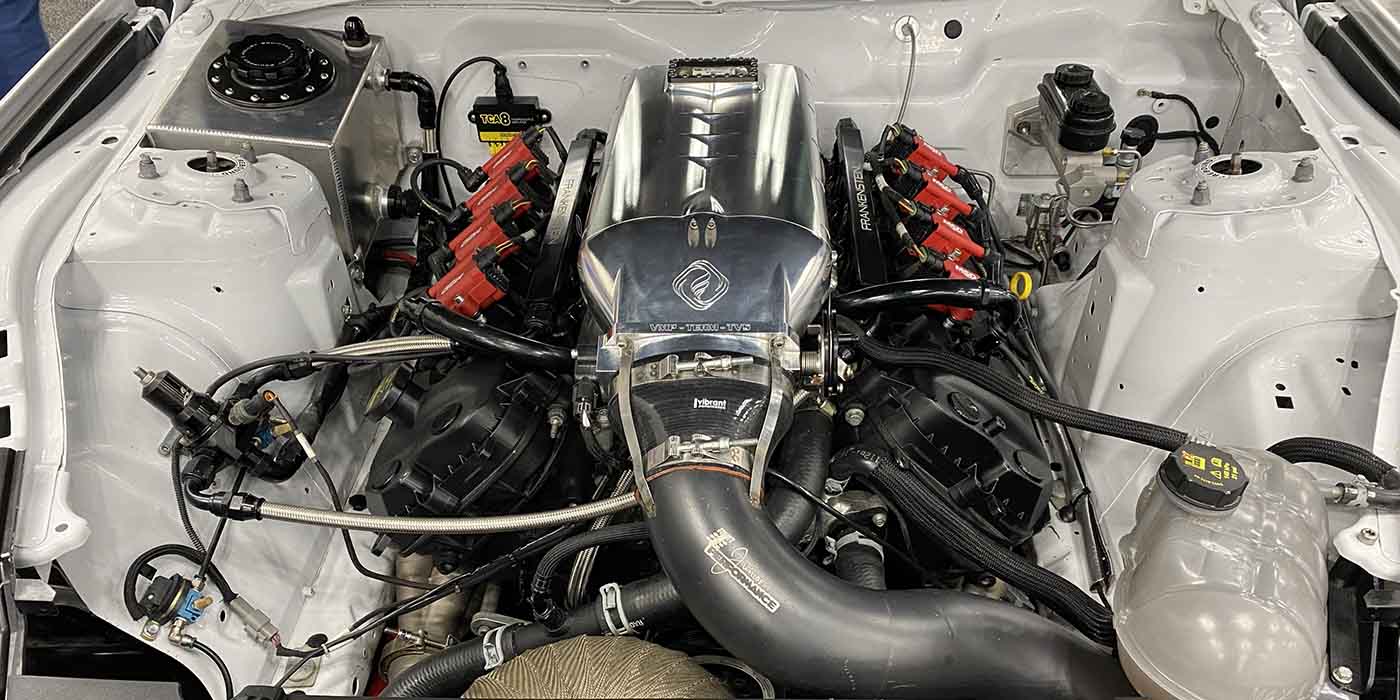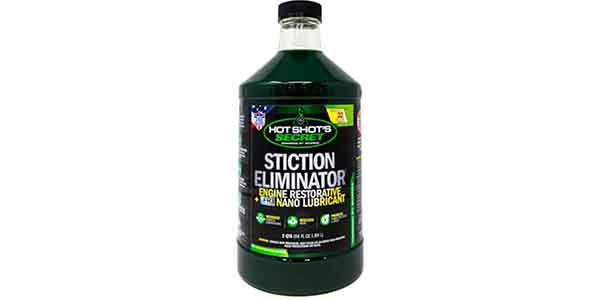Diesel of the Week is presented by

The Ultimate Callout Challenge is the one of the best places to find unique and interesting diesel trucks and engines, and despite most competitors opting for a Cummins under the hood, we do see the occasional Powerstroke. When scouting out the back half of Lucas Oil Raceway over the course of the competition weekend, we glanced over at a 6.0L Powerstroke and knew we had to have a quick chat with owner and builder Harlan Clemons.
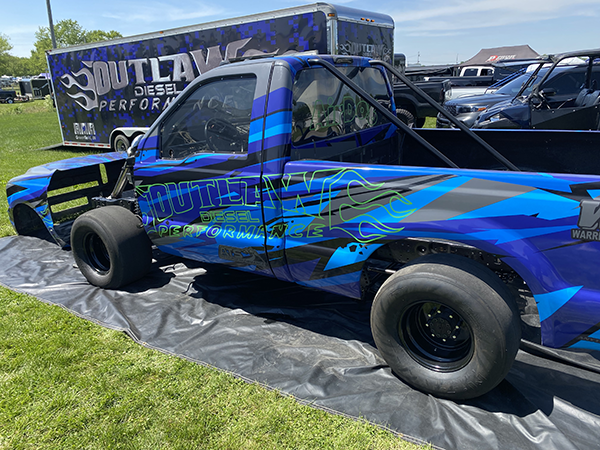
Clemons owns Outlaw Diesel Performance, a shop local to Indianapolis, IN that handles parts, modification, service, and repair. When he’s not running the shop, he’s building up his F-350 dually that he races in the 5.90 index class.
Like many rags-to-riches stories we hear about a particular build, Clemons bought the truck around 10 years ago from a company for only $500 dollars. At that time, it had a 9-foot bed, but that was quickly cut down and Clemons began racing in the 7.70 class. He then moved to the 6.70 class and now he’s finally sitting comfortable in the 5.90 index class.
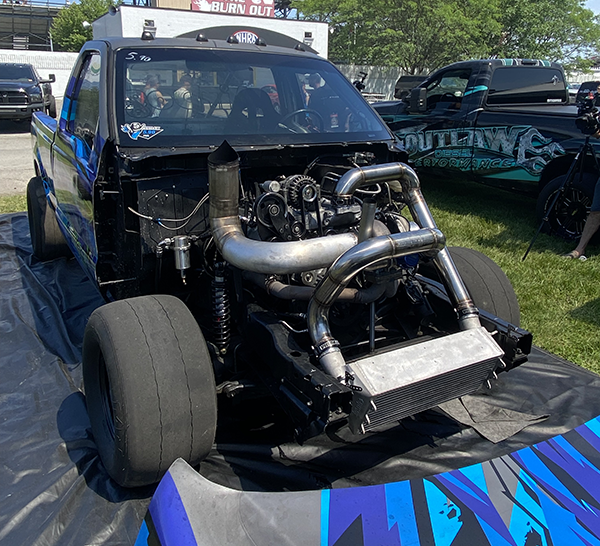
“This diesel stuff is an addiction,” Clemons admits. “It’s hard to be completely happy with something, but I think this build is getting pretty close to being finished. I’d guess we’re probably going to 4-link the front end and then just try to shove on it a little harder and see what we can do with the single turbo.”
The 6.0L has a filled solid block as its base with a standard bore and everything you need in terms of a turbocharged setup. Front and center is a mounted 4th Gen intercooler kit off of Jesse Warren’s famous “Shark Bait” pulling truck. In conjunction with a T6 Stainless 80/96/1.15 housing, wastegate, and S480 turbo, the turbo system under the hood works phenomenally, according to Clemons.
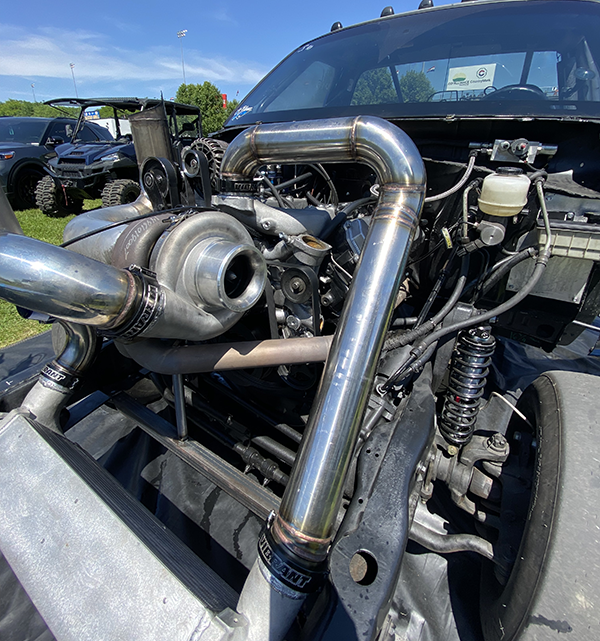
On the fuel side of things, Clemons installed a Warren Diesel Injection billet twin HPOP kit that supports the 500/400 8mm hybrid injectors. Clemons says that the most integral aspect of the build is that all the electronics sit inside the cab.
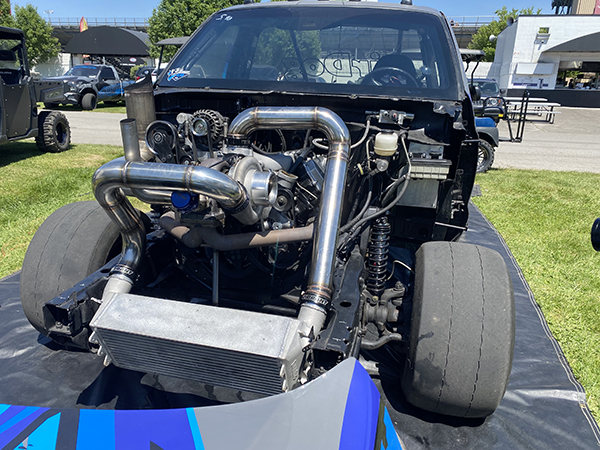
“When you pull the cab off a 6.0L, it’s a nightmare, and I didn’t want to deal with that,” he says. “We’ve got the PCM in the cab and all the different map sensors, and we reversed the harness and put it back in the cab to really simplify what’s under the hood.”
All in all, Clemons’ 6.0L makes somewhere around 1,400 horsepower. That was enough to earn him a personal best 5.93-second eighth mile on his first pass over the weekend at UCC. With minor changes slated for the near future, he’ll likely be making even quicker passes very soon!
Diesel of the Week is sponsored by AMSOIL. If you have an engine you’d like to highlight in this series, please email Engine Builder Editor Greg Jones at [email protected].

